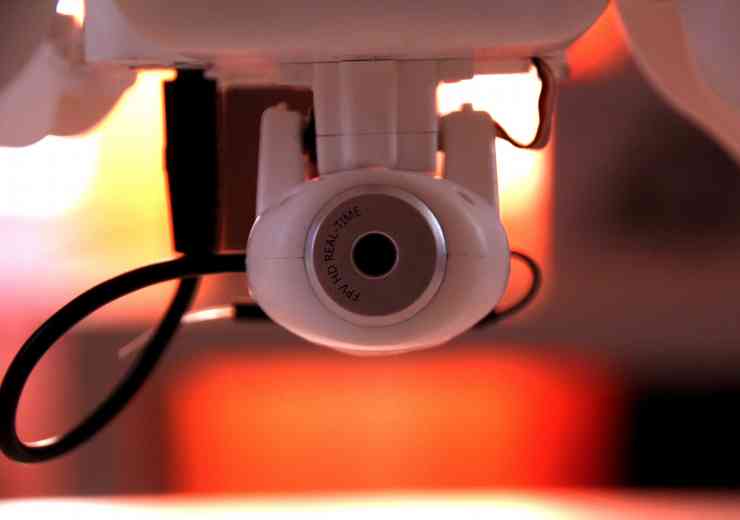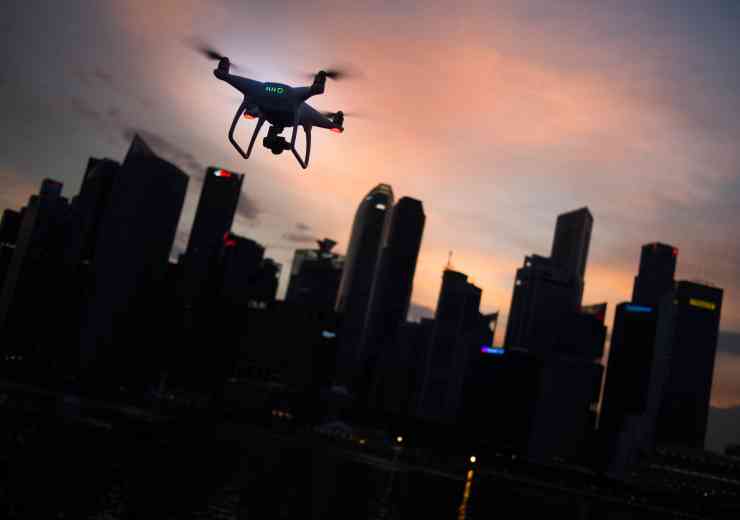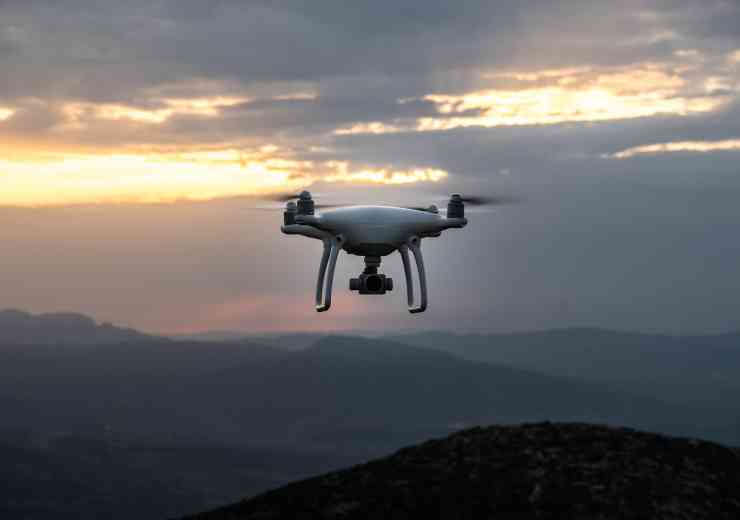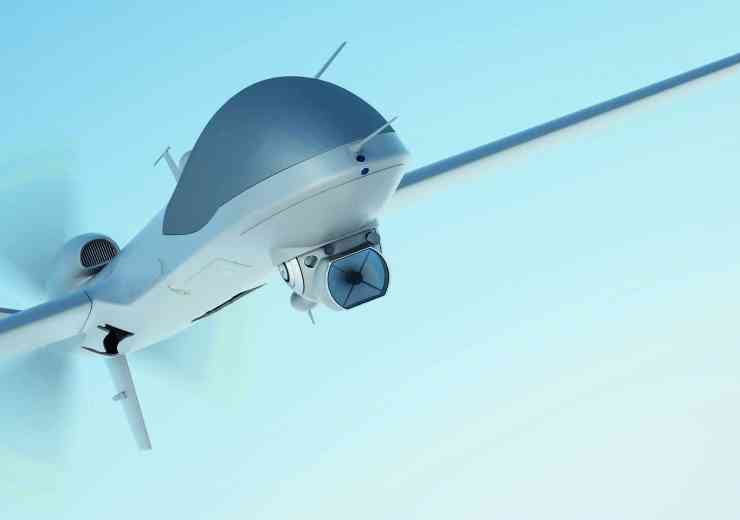
Looking up: Evolving drone threats
Drone developments
While existing malicious drone applications certainly prompt pause, we need also to undertake ‘horizon scanning’ and think with emergent capabilities and their potential to become weaponised. After all, just as drones are becoming more accessible, they are becoming more capable too.
In the case of higher end consumer drones, advancements in ‘intelligent flight’ are of note. Referring to types of flight mode, intelligent flight (as advertised by leading drone manufacturer DJI) includes the ability of drones to lock onto and follow particular points/ objects/ persons, and to increase speed or ascend/ descend rapidly. While marketed as cinematographic techniques, the ‘Committee on Counter-Unmanned Aircraft System Capability for Battalion-and-Below Operations’ warned of the potential of such techniques to “invite creative thinking and engineering”, potentially re-imagined and weaponised to target an individual or object. Similarly, partnerships between higher end consumer drone manufacturers and social media giants such as Facebook are enabling users to live-broadcast drone footage, an innovation which could facilitate the live-streaming of drone-captured propaganda.
Such developments are accompanied by the re-imagination of drone itself. While small drones are commonly understood as ‘low and slow’, the emergence of the aerial sport ‘drone racing’ has seen this status shift. Purportedly capable of travelling 60 - 160 miles-per-hour, such small and swift drones represent the potential to disrupt and overwhelm a site, cordon or security provision. Similarly, while often imagined in isolation, both within and beyond military environments experimentation continues apace in the area of drone swarming – namely drones flying collaboratively in group formation. Such cooperative drones could too act to disrupt and overwhelm, as was in 2018 demonstrated by a group of criminals who deployed a small swarm of drones overhead an FBI hostage operation to keep an eye on their actions, resulting in an official stating that high speed low passes left the FBI ‘blind’.
Such deployments speak to a second kind of drone re-imagination, one that drone researcher Don Rassler refers to as ‘improvised innovation’ or DIY drone modification. Here, to more fully understand potential drone threat, we can turn to hobbyist community experiments with drones. As is readily visible on Youtube, DIY drone hobbyists have equipped drones with both functioning weapons - including flamethrowers, chainsaws, handguns, tasers, paintball and BB guns, as well as other appendages – graffiti cans, fireworks, lighters, and DIY agricultural sprayers. While predominantly not maliciously designed, rather playfully undertaken, such DIY experimentation nonetheless reveals how drones could be adapted in the infliction of harm, causing of damage, or to disrupt a site or event.
Countering drones
How then to counter drones? As articulated in a report authored by researchers at the US ‘Center for the study of the drone’, a suite of responses to errant and rogue drones have emerged – ranging in form from regulatory and legislative to the technological. Profiling 537 counter-measures, the report details the range of styles making up the current technological counter-measure market – from those alerting you to a drone’s presence, to those blocking and even taking over control. While a flourishing market, as the report details, many counter-measures remain confounded by challenges spanning the short decision-making window (given the drone’s speed of travel and counter-measure device range), potential hazards of the drone if rendered a falling object, counter-measure legality and potential interference with communications systems, cost, and lack of testing data. When combined with the challenges posed by increasingly accessible drones (including those available through second hand and informal selling), the ability to pre-programme flights, the potential distance of the operator from their drone, and ambiguity of what a drone might be doing – a picture of the drone as a challenging object to govern and police emerges.
As the UK’s Brandon Lewis MP and Baroness Vere of Norbiton remind us, it remains that ‘there is no technological silver bullet suitable for use against all drones’. It is to this end that those regulating and legislating drones in UK airspace have actively pursued both raising education (see Drone Safe website) and accountability (via mandatory registration and amendments to the Air Navigation Order), while increasing police powers. October 2019 further saw the launch of the UK’s ‘Counter-Unmanned Strategy’, outlining an approach to assess evolving risk, build relationships with industry, and empower police.
While laudable to see growing resource dedicated to mitigating and managing rogue drones, as the UK’s own airspace shifts to welcome growing numbers of commercial and civil drones, the complexity of this task also grows. As skies may busy, so too might nefarious operators adapt – copying platform markings or duplicating flight patterns of legitimate users to cause confusion. While its greatest asset, the mobile drone’s versatility remains too a double-edged sword.
This article was written by Dr Anna Jackman, lecturer in Political Geography at Royal Holloway, University of London.
Anna is an active drone researcher and has published on consumer drone threats. Anna was appointed Specialist Adviser for the House of Commons Science and Technology Committee Inquiry into the ‘Commercial and recreational use of drones in the UK’, and contributed evidence to the Defence Committee’s ‘Domestic threat of drones in the UK’ Inquiry.
Anna can be found on Twitter @ahjackman.
Pages
digital issue



















